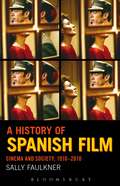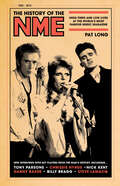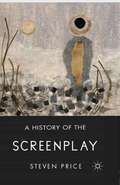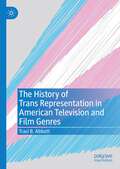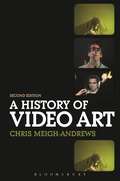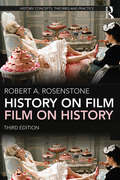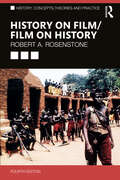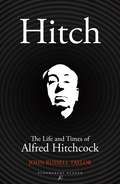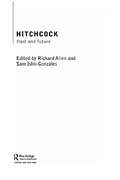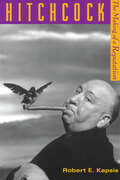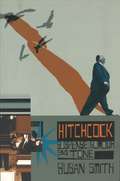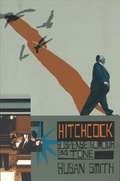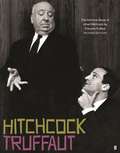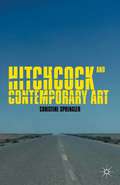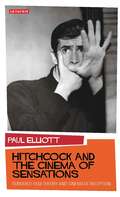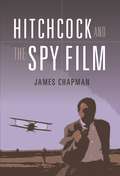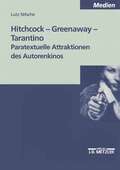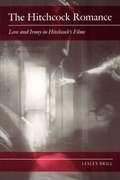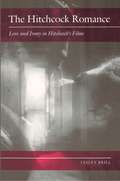- Table View
- List View
A History of Spanish Film: Cinema and Society 1910-2010
by Sally FaulknerA History of Spanish Film explores Spanish film from the beginnings of the industry to the present day by combining some of the most exciting work taking place in film studies with some of the most urgent questions that have preoccupied twentieth-century Spain. It addresses new questions in film studies, like 'prestige film' and 'middlebrow cinema', and places these in the context of a country defined by social mobility, including the 1920s industrial boom, the 1940s post-Civil War depression, and the mass movement into the middle classes from the 1960s onwards. Close textual analysis of some 42 films from 1910-2010 provides an especially useful avenue into the study of this cinema for the student.- Uniquely offers extensive close readings of 42 films, which are especially useful to students and teachers of Spanish cinema.- Analyses Spanish silent cinema and films of the Franco era as well as contemporary examples.- Interrogates film's relations with other media, including literature, pictorial art and television.- Explores both 'auteur' and 'popular' cinemas.- Establishes 'prestige' and the 'middlebrow' as crucial new terms in Spanish cinema studies.- Considers the transnationality of Spanish cinema throughout its century of existence.- Contemporary directors covered in this book include Almodóvar, Bollaín, Díaz Yanes and more.
A History of Spanish Film: Cinema and Society 1910-2010
by Sally FaulknerA History of Spanish Film explores Spanish film from the beginnings of the industry to the present day by combining some of the most exciting work taking place in film studies with some of the most urgent questions that have preoccupied twentieth-century Spain. It addresses new questions in film studies, like 'prestige film' and 'middlebrow cinema', and places these in the context of a country defined by social mobility, including the 1920s industrial boom, the 1940s post-Civil War depression, and the mass movement into the middle classes from the 1960s onwards. Close textual analysis of some 42 films from 1910-2010 provides an especially useful avenue into the study of this cinema for the student.- Uniquely offers extensive close readings of 42 films, which are especially useful to students and teachers of Spanish cinema.- Analyses Spanish silent cinema and films of the Franco era as well as contemporary examples.- Interrogates film's relations with other media, including literature, pictorial art and television.- Explores both 'auteur' and 'popular' cinemas.- Establishes 'prestige' and the 'middlebrow' as crucial new terms in Spanish cinema studies.- Considers the transnationality of Spanish cinema throughout its century of existence.- Contemporary directors covered in this book include Almodóvar, Bollaín, Díaz Yanes and more.
The History of the NME: High Times And Low Lives At The World's Most Famous Music Magazine
by Pat Long'The NME mattered to all those generations who grew up with music at the centre of their universe.The NME never had a truer chronicler than Pat Long.' Tony Parsons Since it was founded in 1952, the New Musical Express has played a central part in the British love affair with pop music.
A History of the Screenplay
by S. PriceThe screenplay is currently the focus of extensive critical re-evaluation, however, as yet there has been no comprehensive study of its historical development. International in scope and placing emphasis on the development and variety of screenplay texts themselves, this book will be an important and innovative addition to the current literature.
The History of Trans Representation in American Television and Film Genres
by Traci B. AbbottDue to the increase in transgender characters in scripted television and film in the 2010s, trans visibility has been presented as a relatively new phenomenon that has positively shifted the cis society’s acceptance of the trans community. This book counters this claim to assert that such representations actually present limited and harmful characterizations, as they have for decades. To do so, this book analyzes transgender narratives in scripted visual media from the 1960s to 2010s across a variety of genres, including independent and mainstream films and television dramatic series and sitcoms, judging not the veracity of such representations per se but dissecting their transphobia as a constant despite relevant shifts that have improved their veracity and variety. Already ingrained with their own ideological expectations, genres shift the framing of the trans character, particularly the relevance of their gender difference for cisgender characters and society. The popularity of trans characters within certain genres also provides a historical lineage that is examined against the progression of transgender rights activism and corresponding transphobic falsehoods, concluding that this popular medium continues to offer a limited and narrow conception of gender, the variability of the transgender experience, and the range of transgender identities.
A History of Video Art
by Chris Meigh-AndrewsA History of Video Art is a revised and expanded edition of the 2006 original, which extends the scope of the first edition, incorporating a wider range of artists and works from across the globe and explores and examines developments in the genre of artists' video from the mid 1990s up to the present day. In addition, the new edition expands and updates the discussion of theoretical concepts and ideas which underpin contemporary artists' video. Tracking the changing forms of video art in relation to the revolution in electronic and digital imaging that has taken place during the last 50 years, A History of Video Art orients video art in the wider art historical context, with particular reference to the shift from the structuralism of the late 1960s and early 1970s to the post-modernist concerns of the 1980s and early 1990s. The new edition also explores the implications of the internationalisation of artists' video in the period leading up to the new millennium and its concerns and preoccupations including post-colonialism, the post-medium condition and the impact and influence of the internet.
A History of Video Art
by Chris Meigh-AndrewsA History of Video Art is a revised and expanded edition of the 2006 original, which extends the scope of the first edition, incorporating a wider range of artists and works from across the globe and explores and examines developments in the genre of artists' video from the mid 1990s up to the present day. In addition, the new edition expands and updates the discussion of theoretical concepts and ideas which underpin contemporary artists' video. Tracking the changing forms of video art in relation to the revolution in electronic and digital imaging that has taken place during the last 50 years, A History of Video Art orients video art in the wider art historical context, with particular reference to the shift from the structuralism of the late 1960s and early 1970s to the post-modernist concerns of the 1980s and early 1990s. The new edition also explores the implications of the internationalisation of artists' video in the period leading up to the new millennium and its concerns and preoccupations including post-colonialism, the post-medium condition and the impact and influence of the internet.
History on Film/Film on History (History: Concepts,Theories and Practice)
by Robert A. RosenstoneHistory on Film/Film on History has established itself as a classic treatise on the historical film and its role in bringing the past to life. In the third edition of this widely acclaimed text, Robert A. Rosenstone argues that to leave history films out of the discussion of the meaning of the past is to ignore a major means of understanding historical events. This book examines what history films convey about the past and how they convey it, demonstrating the need to learn how to read and understand this new visual world and integrating detailed analysis of films such as Schindler’s List, Glory, October, and Reds. Advocating for the dramatic feature as a legitimate way of doing history, this edition includes a new introduction, a revised final chapter, a new epilogue that discusses recent history films such as Selma and The Imitation Game, and an extensive and updated guide to further reading. Examining the codes and conventions of how these films tell us about the past and providing guidance on how to effectively analyse films as historical interpretations, this book is an essential introduction to the field for students of history and film.
History on Film/Film on History (History: Concepts,Theories and Practice)
by Robert A. RosenstoneHistory on Film/Film on History has established itself as a classic treatise on the historical film and its role in bringing the past to life. In the third edition of this widely acclaimed text, Robert A. Rosenstone argues that to leave history films out of the discussion of the meaning of the past is to ignore a major means of understanding historical events. This book examines what history films convey about the past and how they convey it, demonstrating the need to learn how to read and understand this new visual world and integrating detailed analysis of films such as Schindler’s List, Glory, October, and Reds. Advocating for the dramatic feature as a legitimate way of doing history, this edition includes a new introduction, a revised final chapter, a new epilogue that discusses recent history films such as Selma and The Imitation Game, and an extensive and updated guide to further reading. Examining the codes and conventions of how these films tell us about the past and providing guidance on how to effectively analyse films as historical interpretations, this book is an essential introduction to the field for students of history and film.
History on Film/Film on History (History: Concepts,Theories and Practice)
by Robert A. RosenstoneHistory on Film/Film on History has established itself as a classic treatise on the historical film and its role in bringing the past to life. In the fourth edition of this widely acclaimed text, Robert A. Rosenstone argues that to leave history films out of the discussion of the meaning of the past is to ignore a major means of understanding historical events. This book examines what history films convey about the past and how they convey it, demonstrating the need to learn how to read and understand this new visual world and integrating detailed analysis of films such as Schindler’s List, Glory, October, and Reds. Advocating for the dramatic feature as a legitimate way of doing history, this edition includes a new Preface and a new chapter that focuses on films produced in Latin America, Africa, the Middle East, India, and East Asia. Examining the codes and conventions of how these films tell us about the past and providing guidance on how to effectively analyse films as historical interpretations, this book is an essential introduction to the field for students of history and film.
History on Film/Film on History (History: Concepts,Theories and Practice)
by Robert A. RosenstoneHistory on Film/Film on History has established itself as a classic treatise on the historical film and its role in bringing the past to life. In the fourth edition of this widely acclaimed text, Robert A. Rosenstone argues that to leave history films out of the discussion of the meaning of the past is to ignore a major means of understanding historical events. This book examines what history films convey about the past and how they convey it, demonstrating the need to learn how to read and understand this new visual world and integrating detailed analysis of films such as Schindler’s List, Glory, October, and Reds. Advocating for the dramatic feature as a legitimate way of doing history, this edition includes a new Preface and a new chapter that focuses on films produced in Latin America, Africa, the Middle East, India, and East Asia. Examining the codes and conventions of how these films tell us about the past and providing guidance on how to effectively analyse films as historical interpretations, this book is an essential introduction to the field for students of history and film.
Hitch: The Life and Times of Alfred Hitchcock
by John Russell TaylorOne of cinema's greatest directors, a virtuoso visual artist, and a genius of the suspense genre, Alfred Hitchcock (1899–1980) is universally known for such masterpieces as Strangers on a Train, Rear Window, Vertigo, North by Northwest, Psycho, and The Birds. John Russell Taylor, a distinguished film critic and friend of Hitchcock's, enjoyed his full cooperation. Based on numerous interviews, with photos from the private family albums, and an in-depth study of the making of his last film, this biography of the director is as intriguing, revealing, perverse, and entertaining as any Hitchcock classic.
Hitchcock: Past and Future
by Richard Allen Sam Ishii-GonzalesThis new collection of writings on Alfred Hitchcock considers Hitchcock both in his time and as a continuing influence on filmmakers, films and film theory. The contributions, who include leading scholars such as Slavoj Zizek, Laura Mulvey, Peter Wollen, and James Naremore, discuss canonical films such as Notorious and The Birds alongside lesser-known works including Juno and the Paycock and Frenzy. Articles are grouped into four thematic sections: 'Authorship and Aesthetics' examines Hitchcock as auteur and investigates central topics in Hitchcockian aesthetics. 'French Hitchcock' looks at Hitchcock's influence on filmmakers such as Chabrol, Truffaut and Rohmer, and how film critics such as Bazin and Deleuze have engaged with Hitchcock's work. 'Poetics and Politics of Identity' explores the representation of personal and political in Hitchcock's work. The final section, 'Death and Transfiguration' addresses the manner in which the spectacle and figuration of death haunts the narrative universe of Hitchcock's films, in particular his subversive masterpiece Psycho.
Hitchcock: Past and Future
by Richard Allen Sam Ishii-GonzálesThis new collection of writings on Alfred Hitchcock considers Hitchcock both in his time and as a continuing influence on filmmakers, films and film theory. The contributions, who include leading scholars such as Slavoj Zizek, Laura Mulvey, Peter Wollen, and James Naremore, discuss canonical films such as Notorious and The Birds alongside lesser-known works including Juno and the Paycock and Frenzy. Articles are grouped into four thematic sections: 'Authorship and Aesthetics' examines Hitchcock as auteur and investigates central topics in Hitchcockian aesthetics. 'French Hitchcock' looks at Hitchcock's influence on filmmakers such as Chabrol, Truffaut and Rohmer, and how film critics such as Bazin and Deleuze have engaged with Hitchcock's work. 'Poetics and Politics of Identity' explores the representation of personal and political in Hitchcock's work. The final section, 'Death and Transfiguration' addresses the manner in which the spectacle and figuration of death haunts the narrative universe of Hitchcock's films, in particular his subversive masterpiece Psycho.
Hitchcock: The Making of a Reputation
by Robert E. KapsisFrom the beginning of his career, Alfred Hitchcock wanted to be considered an artist. Although his thrillers were immensely popular, and Hitchcock himself courted reviewers, he was, for many years, regarded as no more than a master craftsman. By the 1960s, though, critics began calling him an artist of unique vision and gifts. What happened to make Hitchcock's reputation as a true innovator and singular talent? Through a close examination of Hitchcock's personal papers, scripts, production notes, publicity files, correspondence, and hundreds of British and American reviews, Robert Kapsis here traces Hitchcock's changing critical fortunes. Vertigo, for instance, was considered a flawed film when first released; today it is viewed by many as the signal achievement of a great director. According to Kapsis, this dramatic change occurred because the making of the Hitchcock legend was not solely dependent on the quality of his films. Rather, his elevation to artist was caused by a successful blending of self-promotion, sponsorship by prominent members of the film community, and, most important, changes in critical theory which for the first time allowed for the idea of director as auteur. Kapsis also examines the careers of several other filmmakers who, like Hitchcock, have managed to cross the line that separates craftsman from artist, and shows how Hitchcock's legacy and reputation shed light on the way contemporary reputations are made. In a chapter about Brian De Palma, the most reknowned thriller director since Hitchcock, Kapsis explores how Hitchcock's legacy has affected contemporary work in—and criticism of—the thriller genre. Filled with fascinating anecdotes and intriguing excerpts, and augmented by interviews with Hitchcock's associates, this thoroughly documented and engagingly written book will appeal to scholars and film enthusiasts alike. "Required reading for Hitchcock scholars...scrupulously researched, invaluable material for those who continue to ask: what made the master tick?"—Anthony Perkins
Hitchcock: Suspense, Humour and Tone
by Susan SmithSusan Smith's treatment of the works of the most subtle of all film-makers analyses the key elements of suspense, humour and tone across the whole of the director's career. Arguing that all three are central to our viewing experience, the book demonstrates how Hitchcock's masterly integration of those elements is the key to his success as a film-maker.Examining in detail such films as Sabotage, Notorious, Rear Window, Psycho, Shadow of a Doubt, Rope and The Birds, amongst many others, the book discusses the idea of the director as saboteur and the importance of 'the avoidance of cliché' in Hitchcock's narrative.
Hitchcock: Suspense, Humour and Tone
by Susan SmithSusan Smith's treatment of the works of the most subtle of all film-makers analyses the key elements of suspense, humour and tone across the whole of the director's career. Arguing that all three are central to our viewing experience, the book demonstrates how Hitchcock's masterly integration of those elements is the key to his success as a film-maker.Examining in detail such films as Sabotage, Notorious, Rear Window, Psycho, Shadow of a Doubt, Rope and The Birds, amongst many others, the book discusses the idea of the director as saboteur and the importance of 'the avoidance of cliché' in Hitchcock's narrative.
Hitchcock
by Francois TruffautBased on the famous series of dialogues between Francois Truffaut and Alfred Hitchcock from the 1960s, the book moves chronologically through Hitchcock's films to discuss his career, techniques, and effects he achieved. It changed the way Hitchcock was perceived, as a popular director of suspense films - such as Psycho and The Birds - and revealed to moviegoers and critics, the depth of Hitchcock's perception and his mastery of the art form.As a result of the changed perceptions about Hitchcock, his masterpiece, Vertigo, hit the No 1 slot in Sight & Sound's recent poll of film-makers and critics, displacing Citizen Kane as the Best Film of all time.
Hitchcock and Contemporary Art
by C. SprenglerHitchcock and Contemporary Art introduces readers to the fascinating and diverse range of artistic practices devoted to Alfred Hitchcock's films. His works have the capacity to activate sophisticated engagements with Hitchcock's films and cinema more generally, tackling issues of time and space, memory and history, and sound and image.
Hitchcock and the Cinema of Sensations: Embodied Film Theory and Cinematic Reception (International Library of Visual Culture)
by Paul ElliottWhat happens to us when we 'see' a film? For the experience of what we see on screen draws as much upon the non-visual senses as it does on sight. In the first full-length analysis of the concept of embodied film theory, Paul Elliott charts the development of a 'cinema of sensations' - examining how cinema audiences use their corporeal selves and sensual memory to quite literally flesh out what they see on screen.Through the prism of Alfred Hitchcock's films, Elliott reveals how the body's sensations have a vital place in cinematic reception and the study of film: demonstrated here through the trope of nausea in Frenzy, pollution and smell in Shadow of a Doubt, physical sound reception in the Psycho shower scene and the importance of corporeality and closeness in Rear Window. He traces the way in which conceptual tools such as haptic vision, synaesthesia, physical sound reception and the aesthesiological body have been employed by film theorists and philosophers to better understand the processes inherent in the cinematic experience. He argues that the trend towards a sensually-based theoretical framework for film is indicative of a wider trend in visual thinking that is, in turn, linked to epistemological shifts and transformations in the way we situate ourselves in the world.Hitchcock and the Cinema of Sensations rethinks the body in the ci nema seat, seeing it not as a fleshy, insentient shell for the mind and eye but a feeling, thinking, evanescent site of sensation, memory and knowledge. The book provides a thoroughly new take on Hitchcock's classic films in order to demonstrate how taste, smell, hearing and touch can provide us with a corporeal level of understanding that sometimes compliments, sometimes clashes, with our more cognitive capabilities in the reception of film. This is essential reading for scholars and students of film studies, cultural theory and philosophy.
Hitchcock and the Spy Film
by James ChapmanFilm historian James Chapman has mined Hitchcock's own papers to investigate fully for the first time the spy thrillers of the world's most famous filmmaker. Hitchcock made his name as director of the spy movie. He returned repeatedly to the genre from the British classics of the 1930s, including The 39 Steps and The Lady Vanishes, through wartime Hollywood films Foreign Correspondent and Saboteur to the Cold War tracts North by Northwest, Torn Curtain and his unmade film The Short Night. Chapman's close reading of these films demonstrates the development of Hitchcock's own style as well as how the spy genre as a whole responded to changing political and cultural contexts from the threat of Nazism in the 1930s and 40s to the atom spies and double agents of the post-war world
Hitchcock - Greenaway - Tarantino: Paratextuelle Attraktionen des Autorenkinos
by Lutz NitscheDer wichtigste "special effect" des Autorenkinos ist das Image seiner Regisseure. Filme werden vom Publikum leidenschaftlicher gesehen, in der Öffentlichkeit intensiver kritisiert, wenn neben der Leinwand die Imagination einer Künstlerpersönlichkeit aufscheint. Die Studie beschreibt die Verflechtung von filmischem Oeuvre und jenen Randzonen, die Gérard Genette als Paratexte bezeichnet: Interview, Werbeanzeigen und die filmische Selbstdarstellung. Mit welcher Rhetorik evozieren diese Paratexte das Charisma des Star-Regisseurs? Welchen Anspruch auf Autorschaft formulieren sie? Am Beispiel von drei Regisseuren wird eine paratextuelle Pragmatik des Autorenkinos entwickelt. Der hier vorgestellte Blick fällt seitlich auf das Werk. Und es zeigt sich, dass dort Autoren zu entdecken sind - jenseits der Leinwand.
The Hitchcock Romance: Love and Irony in Hitchcock's Films
by Lesley BrillWas Alfred Hitchcock a cynical trifler with his audience's emotions, as he liked to pretend? Or was he a profoundly humane artist? Most commentators leave Hitchcock's self-assessment unquestioned, but this book shows that his movies convey an affectionate, hopeful understanding of human nature and the redemptive possibilities of love. Lesley Brill discusses Hitchcock's work as a whole and examines in detail twenty-two films, from perennial favorites like North by Northwest to neglected masterpieces like Rich and Strange.
The Hitchcock Romance: Love and Irony in Hitchcock's Films
by Lesley BrillWas Alfred Hitchcock a cynical trifler with his audience's emotions, as he liked to pretend? Or was he a profoundly humane artist? Most commentators leave Hitchcock's self-assessment unquestioned, but this book shows that his movies convey an affectionate, hopeful understanding of human nature and the redemptive possibilities of love. Lesley Brill discusses Hitchcock's work as a whole and examines in detail twenty-two films, from perennial favorites like North by Northwest to neglected masterpieces like Rich and Strange.
The Hitchcock Romance: Love and Irony in Hitchcock's Films
by Lesley BrillWas Alfred Hitchcock a cynical trifler with his audience's emotions, as he liked to pretend? Or was he a profoundly humane artist? Most commentators leave Hitchcock's self-assessment unquestioned, but this book shows that his movies convey an affectionate, hopeful understanding of human nature and the redemptive possibilities of love. Lesley Brill discusses Hitchcock's work as a whole and examines in detail twenty-two films, from perennial favorites like North by Northwest to neglected masterpieces like Rich and Strange.
